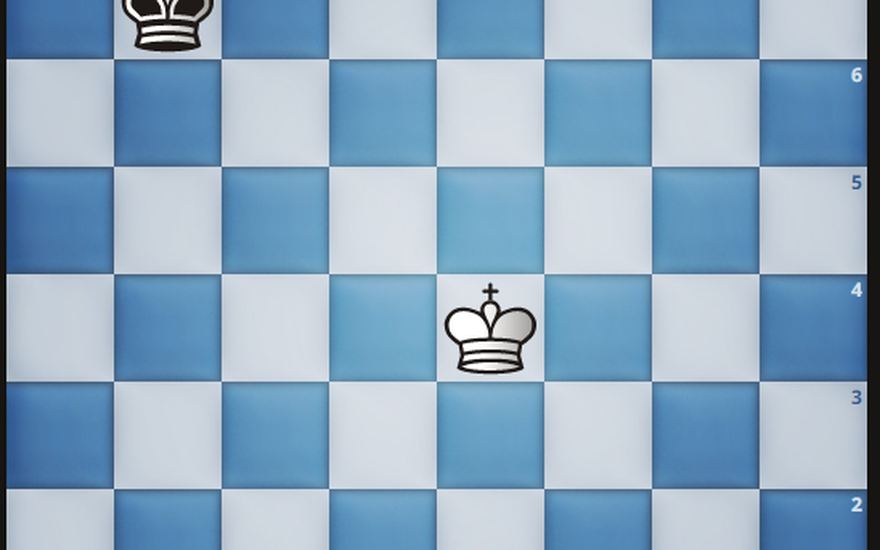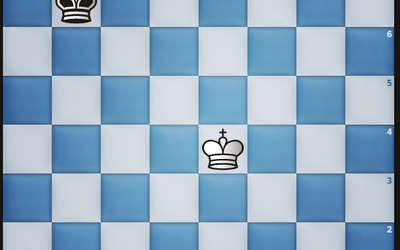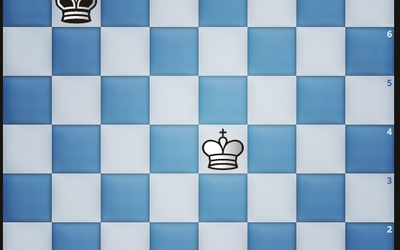
How to play chess
How to play chess?First, you need to know how to setup
Secondly, you need to know how to move the pieces for example (Pawn, Knight, Bishop and more)
Then, you must know the rules
Lastly, know the special moves like castling, En-passant.
How to move pieces?
The King:-
The king is the most important piece, but is one of the weakest. The king can only move one square in any direction - up, down, to the sides, and diagonally.
The Queen:-
The queen is the most powerful piece. She can move in any one straight direction - forward, backward, sideways, or diagonally
The Rook:- The rook may move as far as it wants, but only forward, backward, and to the sides.
The Bishop:- The bishop may move as far as it wants, but only diagonally. Each bishop starts on one color (light or dark) and must always stay on that color.
The Knight:- Knights move in a very different way from the other pieces – going two squares in one direction, and then one more move at a 90 degree angle, just like the shape of an “L”.
The Pawn:- Pawns are unusual because they move and capture in different ways: they move forward, but capture diagonally. Pawns can only move forward one square at a time, except for their very first move where they can move forward two squares. Pawns can only capture one square diagonally in front of them. They can never move or capture backwards. If there is another piece directly in front of a pawn he cannot move past or capture that piece.
Who move first?
The player with the white pieces always moves first.
Special moves:
Promotion:- Pawns have special ability and that is that if a pawn reaches the other side of the board it can become any other chess piece (called promotion). A pawn may be promoted to any piece. [NOTE: A common misconception is that pawns may only be exchanged for a piece that has already been captured. That is NOT true. You may promote a pawn to ANY Piece Except the king] A pawn is usually promoted to a queen. Only pawns may be promoted.
En-Passant:- The last rule about pawns is called “en passant,” which is French for “in passing”. If a pawn moves out two squares on its first move, and by doing so lands to the side of an opponent’s pawn (effectively jumping past the other pawn’s ability to capture it), that other pawn has the option of capturing the first pawn as it passes by. This special move must be done immediately after the first pawn has moved past, otherwise the option to capture it is no longer available.
Castling:- This move allows you to do two important things all in one move: get your king to safety (hopefully), and get your rook out of the corner and into the game. On a player’s turn he may move his king two squares over to one side and then move the rook from that side’s corner to right next to the king on the opposite side. (See the example below.) However, in order to castle, the following conditions must be met:
- it must be that king’s very first move
- it must be that rook’s very first move
- there cannot be any pieces between the king and rook to move
- the king may not be in check or pass through check
Notice that when you castle one direction the king is closer to the side of the board. That is called castling kingside. Castling to the other side, through where the queen sat, is called castling queenside. Regardless of which side, the king always moves only two squares when castling.
Check & Checkmate
As stated before, the purpose of the game is to checkmate the opponent’s king. This happens when the king is put into check and cannot get out of check. There are only three ways a king can get out of check: move out of the way (though he cannot castle!), block the check with another piece, or capture the piece threatening the king. If a king cannot escape checkmate then the game is over. Customarily the king is not captured or removed from the board, the game is simply declared over.
Draws
Occasionally chess games do not end with a winner, but with a draw. There are 5 reasons why a chess game may end in a draw:
- The position reaches a stalemate where it is one player’s turn to move, but his king is NOT in check and yet he does not have another legal move
- The players may simply agree to a draw and stop playing
- There are not enough pieces on the board to force a checkmate (example: a king and a bishop vs.a king)
- A player declares a draw if the same exact position is repeated three times (though not necessarily three times in a row)
- Fifty consecutive moves have been played where neither player has moved a pawn or captured a piece.
for Intermediate
Basic Strategy
There are four simple things that every chess player should know:
knight, but that will be trading three of his points (the knight) for one pawn (one point)!
#1 Protect your king
Get your king to the corner of the board where he is usually safer. Don’t put off castling. You should usually castle as quickly as possible. Remember, it doesn’t matter how close you are to checkmating your opponent if your own king is checkmated first!
#2 Don’t give pieces away
Don’t carelessly lose your pieces! Each piece is valuable and you can’t win a game without pieces to checkmate. There is an easy system that most players use to keep track of the relative value of each chess piece:
- A pawn is worth 1
- A knight is worth 3
- A bishop is worth 3
- A rook is worth 5
- A queen is worth 9
- The king is infinitely valuable
At the end of the game these points don’t mean anything – it is simply a system you can use to make decisions while playing, helping you know when to capture, exchange, or make other moves.
#3 Control the center
You should try and control the center of the board with your pieces and pawns. If you control the center, you will have more room to move your pieces and will make it harder for your opponent to find good squares for his pieces. In the example above white makes good moves to control the center while black plays bad moves.
#4 Use all of your pieces
In the example above white got all of his pieces in the game! Your pieces don’t do any good when they are sitting back on the first row. Try and develop all of your pieces so that you have more to use when you attack the king. Using one or two pieces to attack will not work against any decent opponent.
Getting Better at Chess
Knowing the rules and basic strategies is only the beginning - there is so much to learn in chess that you can never learn it all in a lifetime! To improve you need to do three things:
#1 Play
Just keep playing! Play as much as possible. You should learn from each game – those you win and those you lose.
#2 Study
Study your games where you lost, even you win study it still.
#3 Have fun
Don’t get discouraged if you don’t win all of your games right away. Everyone loses – even world champions. As long as you continue to have fun and learn from the games you lose then you can enjoy chess forever!




